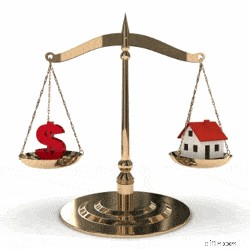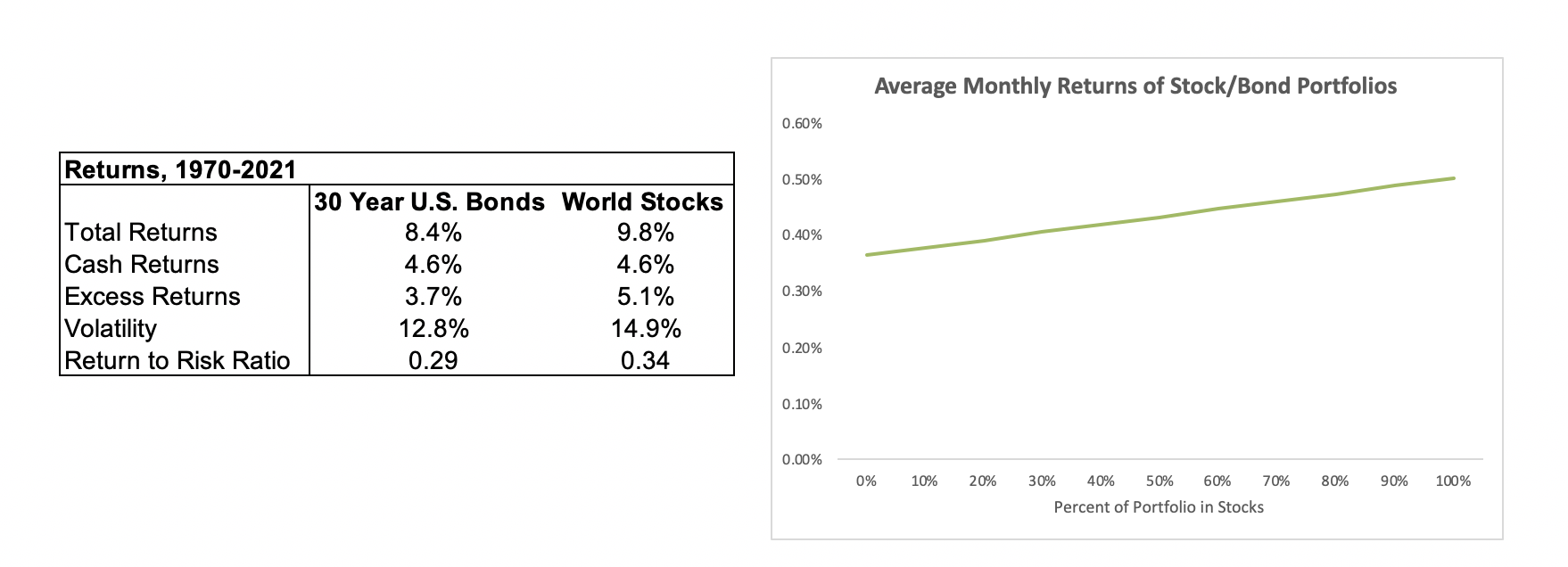Quand devriez-vous refinancer un prêt hypothécaire?
Aux Etats-Unis, le propriétaire moyen refinance son hypothèque tous les quatre ans environ. Les gens refinancent pour de nombreuses raisons, y compris l'obtention d'un taux d'intérêt inférieur, baisse des mensualités, passer d'un crédit immobilier à taux variable à un crédit immobilier à taux fixe, ou pour obtenir une valeur nette pour des améliorations domiciliaires ou pour d'autres raisons.
Sélectionnez votre état pour commencerShould You Refinance a Mortgage?
While there are many potential benefits of refinancing, it’s not always a good idea to refinance your mortgage. If you’re considering a refinance, voici quelques éléments à considérer :
Has your credit score improved?
Because your mortgage interest rate is determined partially based on your FICO credit score, if you know that your credit score has improved considerably since your mortgage loan was signed – it makes sense to consider refinancing your mortgage. The improved credit score should offer a better interest rate. The good news is that being approved for a mortgage can improve your credit score over time, as long as you make regular payments.
Are mortgage interest rates increasing?
If you currently have an adjustable-rate mortgage (ARM) and you anticipate interest rates are increasing, you’ll want to try and switch to a fixed rate mortgage. When you have a fixed rate mortgage, your interest rate will stay the same throughout the course of the loan (unless you refinance it again later). If you already have a fixed-rate mortgage and interest rates are increasing, you probably will not want to refinance. Sometimes people refinance despite getting a higher interest rate if they need to take equity out of their home or change the term of the loan – maybe from 30 years to 15 years, so they can pay it off faster.
Click here to check Mortgage Rates in your area.
Are you having trouble making your payments each month?
If you’re struggling to make ends meet, it may be a good idea to refinance your mortgage if you can lower the interest rate or change the monthly payment amount to a lower amount. This can be done by refinancing the remaining balance on your mortgage loan to a new 30-year loan. The lower balance combined with a longer repayment term will reduce your monthly payments. If you qualify for a lower interest rate, you can decrease your monthly payment even more. (Read more about options for homeowners who can’t make the mortgage payments).
Article similaire: How to Lower Your Mortgage Payments
Do you need to consolidate other debts?
If you find your credit cards or loan payments have gotten out of control, you may decide to take some of the equity out of your home to pay off those debts. Once you have used the home’s equity to pay off debts, you’ll just have the one payment for your home each month to worry about. You’ll save money on interest payments most likely, and it makes it easier to keep track of payments.
Are you making more money?
Not all mortgage refinances are done to obtain a lower payment. Dans certains cas, people get a higher paying job or get married and then have a two-income earning family. If you decide to put your higher income toward paying off your mortgage sooner, you may decide to refinance the mortgage and convert it to a 15-year amortization if it was originally set up as a 30-year amortization mortgage (Compare 15 Year and 30 Year Mortgages to see which is right for you). You’ll save tens of thousands of dollars interest, and you’ll own your home free and clear that much sooner.
The REAL Cost of Refinancing Your Home
With mortgage interest rates at all-time lows, there’s a surge of refinance activity as homeowners try to take advantage of the drop. For most homeowners, refinancing at these rates makes abundant sense. But there are costs involved in refinancing your home that homeowners are not always aware of. Some of them are built into the package of the new loan, and aren’t always obvious.
This isn’t to say that you shouldn’t refinance, only that you need to be aware of certain realities so that you can either avoid them, or at least minimize them. Lets take a look at some of the benefits – and risks – of refinancing your home.
The Twin Focus of Most Mortgage Refinances
Most people refinance due to two primary factors:rate and monthly payment. An interest rate dropping from say 6% down to 3.5% is certainly attractive. So is the possibility of saving $200 or $300 per month on your house payment.
Numbers such as these are attractive to homeowners since they represent measurable benefits from the refinance. But there are certain costs involved in refinancing that have to be considered in light of the savings that are expected to come as a result of getting both a lower interest rate and monthly payment.
Closing Costs
Closing costs are the most obvious and easily measurable costs involved in a refinance. Closing costs are presented to the borrower at both the application and the closing, in hard numbers that are easily understood. You can know for example that you are paying $3, 000 in closing costs to lower the interest rate on your mortgage from 6% to 3.5% on a $150, 000 loan.
One of the most popular ways to determine if the closing costs paid justify doing the refinance is by dividing the amount of the closing costs by the monthly savings. This is sometimes referred to as the “recapture period”. If you divide $3, 000 in closing costs, by a $200 per month reduction in your house payment, you will see that the refinance will pay for itself in just 15 months.
Most financial experts will say that if you can recover your closing costs in 24 to 36 months, then the refinance is worth doing. This is especially true if you plan on being in the house for five years or longer. Not only will you recover the closing costs paid within the first two or three years, but you’ll reap real savings in every year thereafter.
Cash Out Refinance
We don’t normally think of cash out as a closing cost, but taking cash out on a refinance does add to your total indebtedness. This is particularly true if you have done “serial refinances.” Since interest rates have slowly stair-stepped downward over the past 20 years, many homeowners have refinanced several times in that period. If you added just a few thousand dollars to the loan amount each time you refinanced, and you did it five times, you could have increased your loan balance by tens of thousands of dollars.
Cash-out refinancing isn’t just about taking out large amounts of money. If each time you refinanced, you added the closing costs to the new loan amount and took out an extra $2, 000 or $3, 000 for miscellaneous purposes, you may have added $5, 000 or $6, 000 to the new mortgage amount each time. If you’ve refinanced in this way five times over the past 20 years, you may have added as much as $30, 000 to your original mortgage balance.
This isn’t a cost in the sense that we normally think of as a real expense, but if the goal is to ultimately pay off your mortgage, these mini cash-outs are having the exact opposite effect. That’s a cost in some fashion.
Recasting the Original Loan Term
Once again, this is not commonly seen as a cost, and it doesn’t represent an out-of-pocket expense in the near-term, but it does make the cost of your mortgage higher over time.
If you have a 30-year mortgage that you have been paying on for five years, you have 25 years remaining on the loan. If you refinance and recast the loan back to 30 years, you may be saving money on the monthly payment, but you are also adding five years of payments to the back end of the loan.
If you have refinanced your home several times over the years, it’s not inconceivable that you could have unknowingly turned your 30 year purchase money mortgage into what is effectively a 50-year loan. By adding a few years to the loan term each time you refinanced, you will have extended your period of indebtedness on the house for a substantial amount of time.
This is a very common practice, and it is also a major reason why house payments drop as much as they do on refinance. The payment on a new 30-year loan will be less than what it was on the original mortgage simply because you are stretching out the repayment period.
In order to avoid this trap, keep your new mortgage term to not more than the remaining term on your existing mortgage. The reduction in your house payment from the refinance should be the result of a lower interest rate and not an extended mortgage loan term.
Any of these costs can be minimized or eliminated, and by doing so, you will get true savings from doing a refinance.
Mistakes to Avoid When Refinancing Your Mortgage
My wife and I bought a house last year and refinanced the mortgage within a year of the purchase. Most people don’t plan to refinance within a year of their purchase, but the mortgage rates continued falling to the point where it seemed like a good long-term move. We actually could have saved even more money by waiting a few months longer, as we are continuing to see record low mortgage rates.
If you have a mortgage that is over a year old, chances are very good that you will be able to save money by refinancing your mortgage. But take some time to research your options before you apply for a new loan – and make sure you avoid these mistakes!
Mortgage Refinance Mistakes
 1. Be careful not to overestimate the value of your home. Home prices still haven’t fully stabilized in some areas of the country. You may not have as many refinancing options if you are underwater in your home, or you may need to apply for a special refinancing program, such as the Making Home Affordable program. Lower home prices may also erase some of your equity, meaning you may need to bring extra cash to the table to avoid PMI, or you may need to take out an 80-10-10 mortgage or other financing option.
1. Be careful not to overestimate the value of your home. Home prices still haven’t fully stabilized in some areas of the country. You may not have as many refinancing options if you are underwater in your home, or you may need to apply for a special refinancing program, such as the Making Home Affordable program. Lower home prices may also erase some of your equity, meaning you may need to bring extra cash to the table to avoid PMI, or you may need to take out an 80-10-10 mortgage or other financing option.
2. Don’t focus only on the interest rates. Not all loans are created equally. Be sure to compare the offers from each lender on a term by term basis, keeping in mind that all lenders charge varying fees and closing costs. Be sure to compare lender fees, loan terms , nd lender reputations into your decision to refinance your mortgage.
You may also be able to get a lower interest rate by buying points on your mortgage. Be sure to run the numbers.
3. Don’t use the first lender you find. There are thousands of lenders out there, but they aren’t all created equally. It’s a good idea to consider lender reputation and whether or not your lender will continue to service your mortgage or sell it off to investors. Dealing with one lender over the course of your mortgage is often preferred over dealing with multiple mortgage servicers as sometimes paperwork gets lost, escrow requirements may change, etc.
Shop for the best mortgage rates. We recommend searching a variety of options before refinancing your mortgage. Some great places to shop for good mortgage rates include Quicken Loans and Lending Tree. We also have a mortgage comparison table on our site.
4. Consider all loan terms. Many borrowers are refinancing into a 30-year fixed mortgage instead of considering other options such as a 20-year or 15-year fixed rate, which would shorten the life of the loan and significantly reduce the amount paid to interest. Here are the pros and cons when comparing 15 and 30-year mortgages.
5. Consumers are uncertain of what documents are required to refinance: Borrowers who haven’t refinanced in recent years are sometimes fail to have the required document going into refinancing which delays the closing process. Be sure to gather all your documentation in advance and bring it with you to the closing. This will save you a lot of time, and possibly money.
6. Inaction. The current mortgage rates are excellent, but they may or may not be around for awhile. The sooner you lock in your rate, the sooner you can start saving money – and more importantly, not miss out on this opportunity.
7. Underestimating the time commitment. Refinancing your mortgage can be time intensive, depending on several factors, such as how much you owe on your home, whether or not their are multiple liens on the home, time of year, whether or not you are self-employed, et d'autres facteurs. Be prepared to take a few days to compare mortgage rates, get your home appraised, and schedule the closing. The actual paperwork can take a couple hours depending on all of the above factors. My wife and I used a VA Loan to buy our home, which has a specific process for buying and refinancing. Heureusement, refinancing with a VA Streamline Refinancewas fairly easy.
Take all of these items into account, and you can likely save a lot of money by refinancing your mortgage.

budget
- Comment acheter des vêtements de haute qualité
- 8 étapes pour créer un plan financier solide
- Investir dans l'or ? Connaître les implications fiscales
- Vie minimaliste :14 façons simples d'améliorer facilement votre vie
- Avantages et inconvénients de la budgétisation base zéro
- Combien devriez-vous donner un pourboire ? Diviser par six et autres hacks
-
 Comment vivre hors du réseau pour pas cher
Comment vivre hors du réseau pour pas cher Lénergie éolienne à lancienne peut encore être trouvée dans les zones rurales. Lidée de vivre de la terre, autonome et autosuffisant, fait toujours partie du rêve américain. Que vous souhaitiez vivre...
-
 Comment calculer l'indemnité de départ militaire
Comment calculer l'indemnité de départ militaire Les militaires de toutes les branches peuvent être admissibles à une indemnité de départ. Lorsquun militaire quitte involontairement larmée avec une décharge honorable, il peut être admissible à une ...
-
 11 raisons surprenantes pour lesquelles voyager peut soulager la dépression
11 raisons surprenantes pour lesquelles voyager peut soulager la dépression Il y a de nombreuses raisons pour lesquelles voyager peut aider la dépression que nous appelons prestations de santé en voyage , même quand on se sent déprimé, le changement de lieu insuffle une nou...
-
 Pourquoi détenir des obligations ?
Pourquoi détenir des obligations ? Les actions ont des rendements historiques et attendus plus élevés que les obligations, mais ils sont très volatiles. Lavantage dajouter plus dactions diminue et se rapproche de zéro (et peut même...




